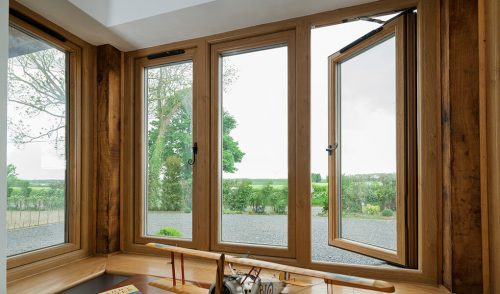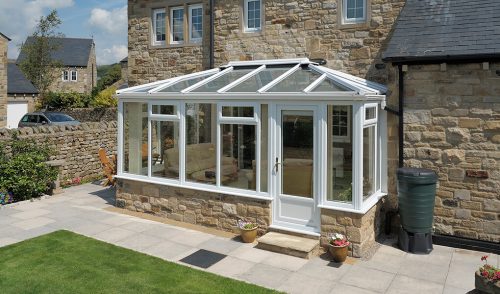Key Findings
- Mould on windows develops when excess moisture meets cold surfaces, creating ideal conditions for mould spores to thrive on window frames and window sills
- Black mould can trigger allergic reactions and serious health problems if left untreated
- Simple cleaning solutions using warm water and white vinegar or one part bleach to three parts water effectively remove existing window mould
- Long-term prevention requires proper ventilation, controlled humidity levels and regular maintenance, especially during winter months when condensation forms
- Modern double glazing dramatically reduces condensation by keeping inner window panes warmer, eliminating the breeding ground for mould growth
Discovering black mould around your window frames is never pleasant. Beyond the unsightly dark patches and musty smell, mould poses genuine health risks and indicates underlying damp problems. The good news? Understanding how to stop mould on windows is straightforward once you know what causes it.
For homeowners across Aylesbury and Buckinghamshire, window mould becomes a big problem during colder months when warm air inside meets cold window panes, causing water droplets to form. As winter approaches, older timber windows are particularly susceptible, as wooden window frames absorb moisture more readily, creating the perfect environment for mould spores to flourish.

What causes mould around windows?
Several factors contribute to creating damp conditions around windows. Identifying the cause of the mould is your first step towards lasting solutions.
Excess condensation
When humid air contacts cold surfaces like window panes, condensation forms. This excess moisture provides exactly what mould spores need to multiply. You’ll often notice water droplets gathering on windows first thing in the morning, particularly in bedrooms and kitchen windows. The amount of condensation increases dramatically during winter months.
Poor ventilation
Without adequate ventilation, moisture-laden air becomes trapped inside, raising indoor humidity levels. Homes with insufficient fresh air circulation, perhaps due to blocked trickle vents or keeping windows closed constantly, become breeding grounds for mould growth.
Lack of maintenance
Deteriorating window seals, damaged wooden frames and compromised perimeter areas around windows all contribute to moisture ingress. When building materials around windows degrade, they trap moisture against surfaces. Regular inspection helps catch these issues before black mould takes hold.
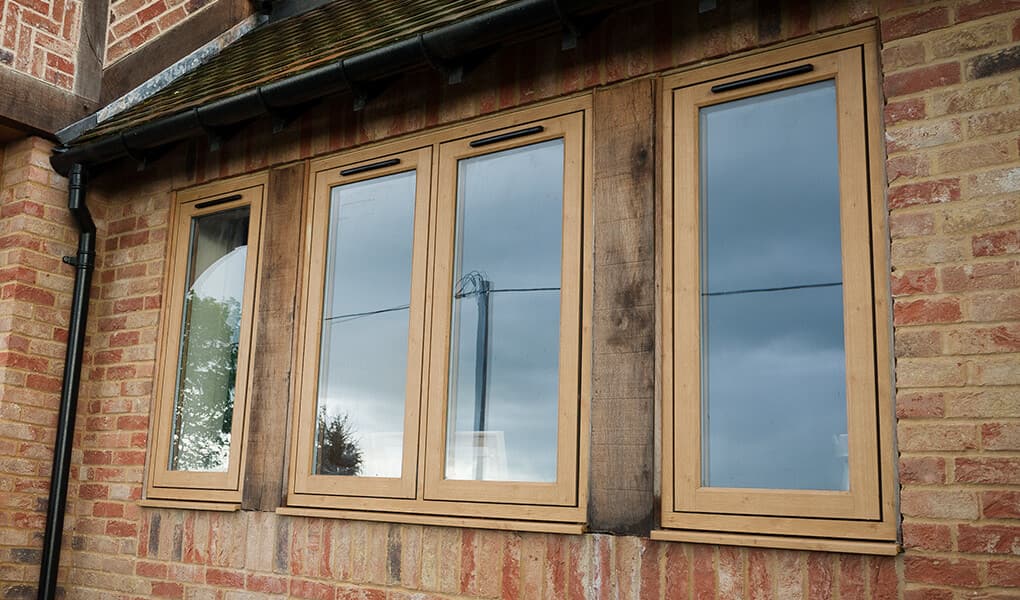
Easy cleaning methods to remove existing mould
Tackling mould promptly prevents it spreading. Always wear rubber gloves and ensure good ventilation when cleaning mould.
For light mould growth:
- Mix warm water with washing-up liquid and scrub the affected area with a clean rag
- Spray white vinegar directly onto mould patches, leave for an hour, then wipe clean
- Dry thoroughly afterwards
For stubborn black mould:
- Create a solution of one part bleach to three parts water in a spray bottle
- Apply to the affected area, leave for 15 minutes, then scrub with a scrubbing brush
- Rinse using warm water and dry completely
Clean window frames, window sills and the perimeter of the window monthly during winter months to prevent mould spores establishing themselves in the first place.
Preventative steps to stop mould returning
Prevention is the best way to maintain a healthy home environment.
Improve ventilation: Open windows regularly for 10-15 minutes daily to allow fresh air circulation. Check that trickle vents aren’t blocked.
Control moisture at source: Run extractor fans when cooking or bathing, dry washing outdoors when possible and vent tumble dryers externally. Position soft furnishings away from windows.
Monitor indoor temperature: Maintain consistent indoor temperatures to prevent cold spots where condensation forms. Ideal indoor humidity sits between 40-60%.
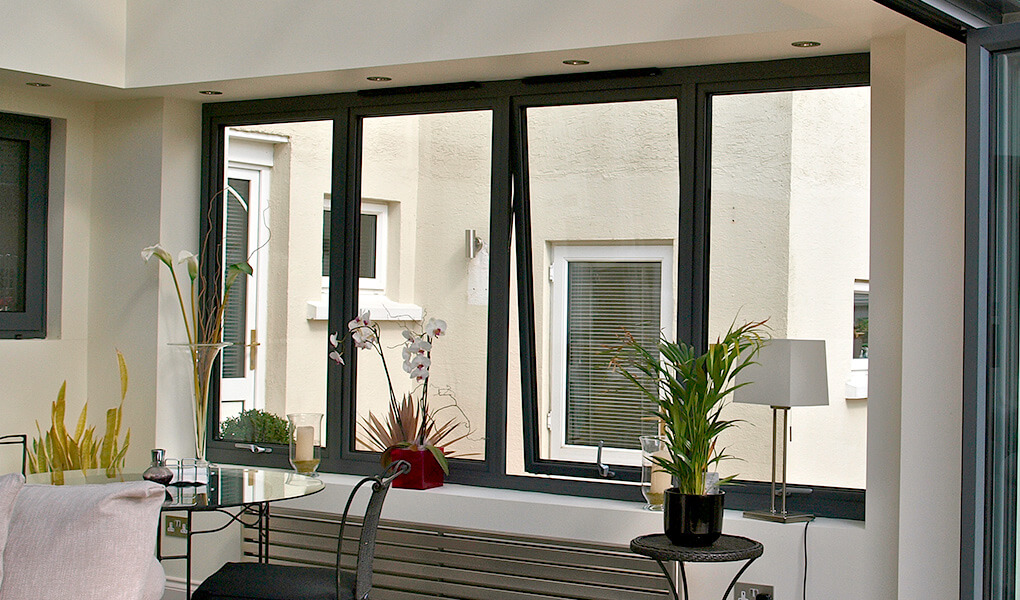
When prevention isn’t enough
If you’re still battling persistent condensation and mould growth, your windows themselves may be the problem. Tell-tale signs include:
- Constant condensation between glass panes
- Visible rot or warping in wooden window frames
- Draughts even when windows are closed
- Persistent mould returning within days of cleaning
Long-term solutions: Replacement windows that prevent mould
Modern replacement windows address the root cause of window mould by eliminating cold surfaces where condensation forms. With over 30 years’ experience, we’ve transformed countless homes from damp, mould-prone spaces into comfortable, healthy environments.
uPVC windows: Affordable, low-maintenance protection
uPVC (unplasticised polyvinyl chloride) has become Britain’s most popular window material. Unlike timber, uPVC doesn’t absorb moisture, eliminating damp conditions that encourage mould growth. The multi-chambered frame design provides outstanding thermal insulation, keeping inner surfaces warmer and dramatically reducing condensation.
Our range includes authentic woodgrain effects that replicate oak, rosewood and anthracite finishes. Despite their affordability, our uPVC windows deliver uncompromising quality with advanced locking systems and energy-efficient double glazing or triple glazing options.
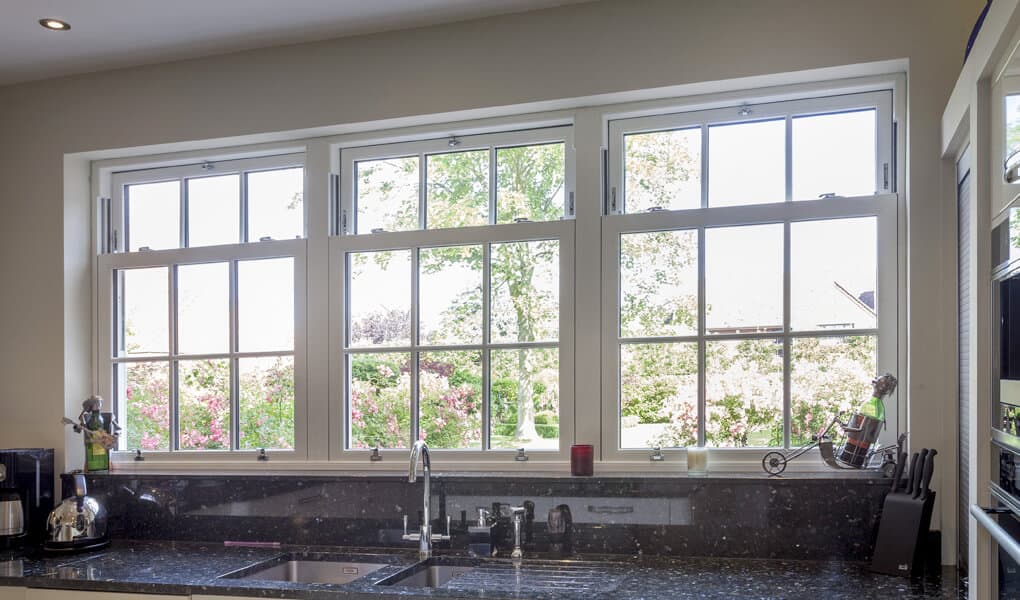
Aluminium windows: Slim profiles with maximum performance
Our aluminium windows offer ultra-slim sightlines without sacrificing thermal performance. Modern aluminium frames feature thermal breaks that maintain warm inner surfaces that resist condensation.

Our window styles:
- Casement windows – Opening outward on side-mounted hinges for excellent ventilation
- Tilt and turn windows – Tilts inward for secure ventilation or swings fully inward for cleaning
- Flush sash windows – Traditional aesthetic where the sash sits flush with the frame
- Vertical sliding windows – Classic sash appearance sliding smoothly up and down
- Residence 9 windows – Premium timber-alternative replicating 19th-century aesthetics
Frequently asked questions
Can mould on windows cause health problems?
Yes, exposure to mould spores can trigger allergic reactions, respiratory issues and worsen asthma. Certain species like Stachybotrys chartarum pose serious health problems. Vulnerable individuals face greatest risk from prolonged exposure.
What’s the best way to prevent condensation on windows?
Maintain proper ventilation by opening windows daily, use extractor fans, keep consistent indoor temperatures and control humidity sources. Modern double glazing dramatically reduces condensation by keeping inner glass surfaces warmer.
How often should I clean my windows to prevent mould?
During winter months, inspect and wipe down window sills and frames weekly. Clean thoroughly monthly. Regular maintenance prevents mould spores establishing themselves in the first place.
Who are Premier Windows?
We’re a local, family-run company with over 30 years’ experience transforming homes across Aylesbury, Buckingham, High Wycombe, Wendover, Amersham, Thame and throughout Buckinghamshire. Our showroom, located just off the A41, welcomes you to explore our complete range without pressure.
We’re proud of our fantastic reputation built through thousands of installations. Our accreditations include DGCOS and Which? Trusted Trader status. We’re FENSA-registered and all our work comes with a ten-year insurance-backed guarantee.
We offer windows (casement, tilt and turn, flush sash, vertical sliding and Residence 9 styles) in uPVC and aluminium with double or triple glazing. Our door range includes composite, uPVC and aluminium entrance doors, plus bifold, French and patio doors. We also install orangeries, porches and conservatory roofs.
Ready to solve your condensation and mould problems for good? Visit our showroom Monday-Friday 9am-5pm or Saturday 10am-1pm, call us on 01296 422 842, or email enquiries@premwindowsanddoors.co.uk for your free, no-obligation quote. Let’s create a warmer, healthier home free from window mould.

Get a free quote
If you're interested in any of products then get in touch with us to get your free quote today.
Book an appointment
If you would like to discuss our incredible range of products, then book an appointment today.

